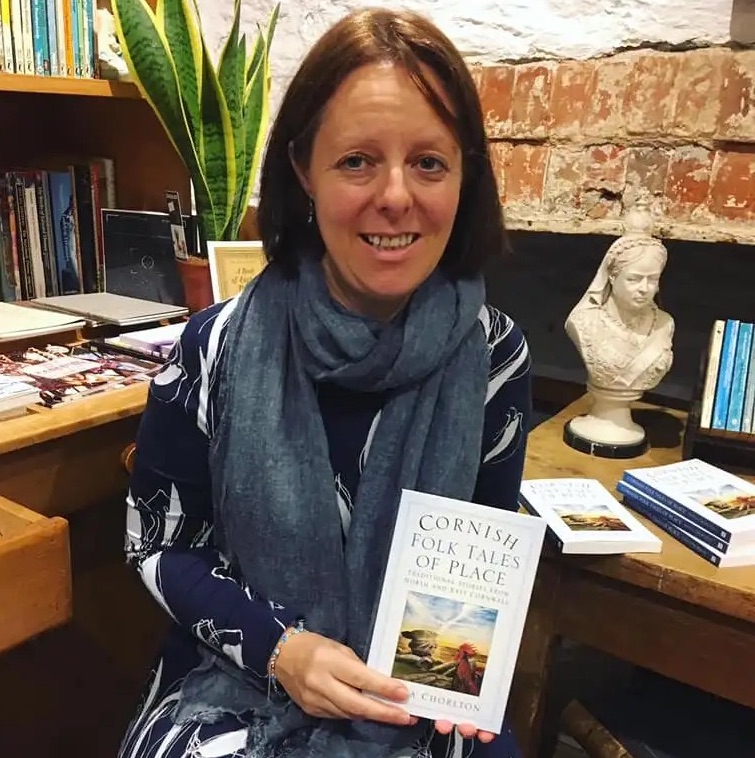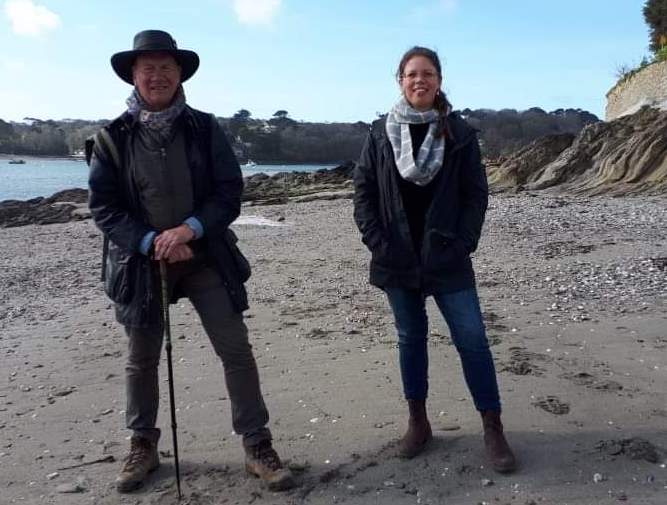LAWRENCE MCNEELA TAKES A LOOK AT KEEPING CORNWALL’S CULTURAL TRADITIONS ALIVE IN THE MODERN AGE. WRITING EXCLUSIVELY FOR PROPER CORNWALL, THE LOCAL AUTHOR SPEAKS TO OTHER CREATIVES IN THE DUCHY…
The new millennium has been dominated by a seemingly relentless march of technology. Smartphones, streaming and social media have changed the world beyond all recognition. Yet despite this, traditional folklore is enjoying an unprecedented international revival. All around the globe, people are reacting to the modern and new by embracing the old and reassuring.
Anna Chorlton has surfed this wave by creating a collection of stories from the north and east of Cornwall. The Duchy boasts some of the most celebrated folklore in the world, so the Cornish author has no shortage of tales to choose from.
When we meet up in mid-February 2024, I ask Chorlton, who learnt to crawl on the golden sands of Downderry Beach near Looe, what she believes is behind folklore’s renaissance.
“The old stories have a certain truth in them,” she suggests. “Some, like the Seaton mermaid, are environmental tales. Cornish mermaids leave the sea alone. They respect it. Those hearing the story are told to do the same.
“Meanwhile, our witch tales are all about being kind. Piskeys look after people but they don’t interfere in their business. These themes remain as important to people today as when they were first written.”
 Cornish author Anna Chorlton with her 2019 book ‘Cornish Folk Tales of Place’. Image by Stuart Chorlton
Cornish author Anna Chorlton with her 2019 book ‘Cornish Folk Tales of Place’. Image by Stuart Chorlton
Chorlton, whose website is: here, explains why she believes it’s vital to keep the region’s cultural traditions alive. “Folklore and myths tell the story of Cornwall,” she notes. “They celebrate our identity, character and landscape. Whether the characters involved are piskeys, mermaids or giants, one gets a deeper experience and understanding of place.
“For instance, you can surf the north coast. It’s great fun to do. But you can surf almost anywhere, from Hawaii to Australia! By hearing about piskeys on the cliffs or the deeds of the infamous wreckers, you learn why the landscape’s unique.”
Like Chorlton, local writer Elizabeth Dale is Cornwall born and bred. She can trace her family tree in the Duchy all the way back to 1550. Having returned home from nine years travelling abroad, she realised some of the best stories and most beautiful sunsets were found right here in Cornwall. It was then she decided to share the stories with visitors and locals alike.
“The first folktale I remember hearing was the story of the Merry Maidens and The Pipers standing stones,” she tells me. “They were maidens and musicians turned to stone for dancing on Sunday. Many of our legends are a way of explaining how such stone monuments or strange rock formations came to be.”
Dale’s blog, The Cornish Bird, is a phenomenal success. So much so that she’s been featured on Michael Portillo’s Channel 5 TV show ‘Coastal Devon & Cornwall’. She believes more people than ever now realise folklore provides a way of finding a connection to, and therefore an understanding of, our past. In so doing, she says, it provides an opportunity to honour and preserve our shared heritage.
“Many Cornish folk traditions also mark the changing of the seasons,” she says, “and this can be very grounding in the bustle and strife of modern life.”
 ‘The Cornish Bird’ Elizabeth Dale with Michael Portillo on a Cornish beach. Image courtesy of Elizabeth Dale
‘The Cornish Bird’ Elizabeth Dale with Michael Portillo on a Cornish beach. Image courtesy of Elizabeth Dale
That said, in recent years, the Owlman of Mawnan has become one of Dale’s favourite tales, proving that not all the stories enjoyed are ancient. “It’s quite a modern folktale,” she explains, “first recorded during the 20th century. I’m intrigued that in the so-called ‘modern age’, a story like this can still take hold, capture people’s imaginations, tap into their fears and become part of Cornwall’s heritage.”
At this point, it would seem only fair to share the strange tale set in Mawnan, a village to the south of Falmouth near the Helford River, which Dale so loves…
In 1926, a Cornish newspaper ran a story about two young boys chased by a very large and ferocious bird. The terrified lads escaped from the raptor and hid behind a large steel grating. Other sightings were soon reported but nothing was ever captured on camera.
Just over 10 years later, a pair of let’s say interesting surrealist artists were holidaying nearby and became intrigued by the tale. German painter Max Ernst and his young lover Leonora Carrington were so fascinated by the alleged Owlman that they tried to summon it with occult rituals.
Half a century passed and, the attempts having failed, the feathered creature was all but forgotten. That was until April 1976, when two young girls claimed to have witnessed an abnormally large bird flying over the tower of Mawnan Smith’s church on Easter Saturday.
The pair, who’d been camping with their family in the nearby woods, were so scared that their parents had to cut short their holiday and return to Lancashire. Before they did, however, their father presented local artist and magician Tony ‘Doc’ Shiels with a sketch the girls had drawn.
Doc Shiels had a reputation for being something of a practical joker. He certainly enjoyed courting publicity with a series of, again let’s say interesting events, such as using covens of nude witches to summon Morgawr, the legendary Cornish sea monster. It’s often claimed that he dreamt up the 1976 sighting and the whole thing was a hoax.
However, there was another sighting two years later when eyewitnesses saw an abnormally large bird, silvery grey in colour, fly into the air and disappear. It was so large that, until it took flight, the men who saw it believed a person was wearing a costume. As Owlman flew away, a strange static noise came from nearby trees.
Owlman reappeared in 1989 and again in 1995, when an American tourist wrote to the ‘Western Morning News’ with details of what she saw. It must’ve been quite the experience, for she described it in her missive as a ‘vision from hell’:
‘It was the size of a man with a ghastly face, a wide mouth, glowing eyes and pointed ears. It had huge clawed wings and was covered in feathers of silver grey colour. The thing had long bird legs which terminated in large black claws. It saw me and rose, floating towards me. I just screamed, then turn and ran for my life. The whole experience was totally irrational and dreamlike‘.
Could there really be such an impossible beast haunting what a local news website calls the region’s ‘most perfect village’? Perhaps, although one explanation that has been posited is that these are sightings of a Eurasian eagle-owl, one of the largest owls in the world. Probably the most likely explanation, however, is a continuing hoax based on the imagination of two scared boys, a pair of somewhat dissolute artists, an attention-seeking trickster and local mischief.
But then, again, maybe not. As Elizabeth Dale says, when explaining why there’s been such a resurgence of interest in folklore this millennium: “Everyone needs a little mystery and magic in their lives!”
Article written by Cornwall author Lawrence Patrick McNeela, who wrote ‘The Children of Powerful Men‘. This is a unique detective novel inspired by Cornish literature, folklore and history. Buy it: here.
 Lawrence McNeela and the glorious Cornish coastline
Lawrence McNeela and the glorious Cornish coastline